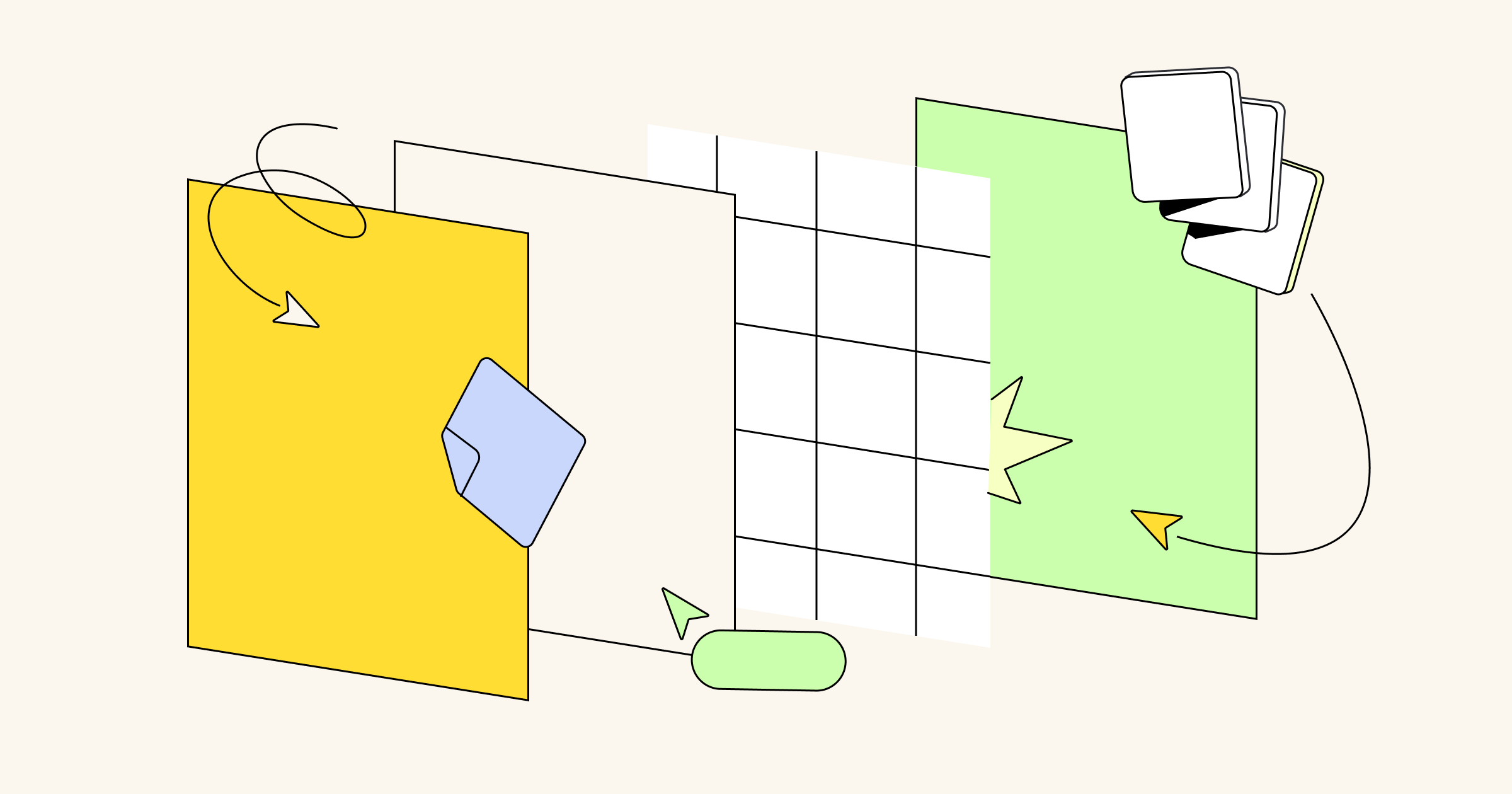There’s a difference between getting the work done and getting the work done well.
As a leader, you’re likely most focused on the second part. You don’t just want to get random tasks across the finish line at any cost — you want to maximize your team’s resources and deliver high-quality work that makes a meaningful impact on your organization.
Whether you use the academic term to describe it or not, what you’re working toward is better organizational efficiency.
What exactly is organizational efficiency?
Organizational efficiency is the process of working toward and achieving your business goals while using the smallest amount of resources possible.
“We go a step further and say that it’s the ability for an organization to make its desired impacts with the most potential still left over to go beyond,” explains Nick Noble, founder of Miniware, a company that helps teams remove waste and focus on their mission.
True efficiency isn’t just about doing the work well. It’s about doing the right work well. Or, as Nick puts it, doing the right thing and doing the thing right.
“A lot of companies these days fail to prioritize well at all levels of the organization. This means that while they may be executing plans efficiently, many of those goals don’t actually help them get where they want to go.”
Efficiency vs. effectiveness: What’s the difference?
Organizational efficiency and organizational effectiveness are two terms that have a lot of similarities and are often used interchangeably. However, there’s a subtle difference. David Crysler, founder and principal consultant at The Crysler Club, explains, “Effectiveness is all about the big picture and hitting our goals, whereas efficiency is a measure of how well we did reaching our goals.”
He says to imagine a business as a hockey game. The goal is to win the game. Whether you win by one point or three doesn’t matter as long as you win. “That’s effectiveness,” David says. “We set out to win and we won.” He adds:
“In contrast, efficiency is answering questions like, ‘Did we do it in regulation or did it require overtime to achieve the win?’ and ‘Were there injuries or did everyone stay healthy?’”
How do you measure organizational efficiency?
You probably don’t need to be sold on the benefits of efficiency. Focusing on this type of organizational improvement means delivering better work with less waste and lower costs.
But before you can make smart changes, you need to understand how your company is currently performing. Here are three ways to find out:
1. Do a gap analysis
Conducting a gap analysis is helpful for understanding where you currently are, where you want to go, and what obstacles might stand in your way. With this gap analysis template, you can define your current state and desired future state, and then identify what’s missing.
2. Revisit your goals
Organizational efficiency means minimizing your resources while also meeting your goals. So, returning to your objectives is a great way to understand how you stack up.
When you do, remember David’s hockey example. You don’t just need to confirm that you met the goal: You need to dig deeper to understand how it all went. Was everything as smooth as possible or are there notable improvement areas?
The Plus Delta model and template is a simple framework to help you reflect on the success of a project or goal and identify what to change moving forward.
3. Determine your decision latency
Decision latency is a major metric that Nick focuses on when evaluating efficiency. It’s as simple as asking yourself, how quickly do you make decisions and how quickly do you follow through on them?
“From here, it’s very easy to tell whether an organization is going to be successful,” he explains. “If the average decision, big or small, takes one to three days, that company is going to be able to achieve a lot. They’ll iterate faster, learn faster, and recover more quickly from mistakes.”
In contrast, when he sees companies where decisions take more than two to three weeks, it usually points to a whole host of other issues. Those problems could be anything from too many meetings with high headcount and low output to staff retention issues, long-running projects, or technical debt. And even worse, “these organizations rarely reverse bad decisions,” Nick says, “Because it would take too much time.”
If you realize that decision-making is a major slowdown for your company, try using a decision matrix template to better weigh your options and make faster choices with confidence.
How to improve organizational efficiency: 4 tips (and templates to help)
How you approach organizational improvement will depend on the types of gaps and challenges you identified in the previous steps. But speaking generally, there are a few tips that are always helpful, regardless of your unique circumstances.
1. Limit the amount of work in progress
Keep in mind that efficiency isn’t about getting a lot of work done. It’s about getting the most meaningful work done. For that reason, reduce the amount of work your team is doing down to only pressing priorities.
“Sometimes it feels like you’re being efficient when there’s a lot happening,” Nick explains. “But studies repeatedly show that, in the long run, teams get more shipped if they prioritize ruthlessly and focus on ‘less but better.’”
Relevant organizational efficiency templates
- Bull’s eye diagram template to identify primary, secondary, and tertiary tasks
- Prune the product tree template to prioritize product feature requests
2. Start with low-effort and high-impact tasks
If you and your team are intimidated by making changes, “look for a combination of easy-to-implement and potentially high-impact ideas to implement first,” David advises.
Those types of changes feel more manageable to start with but also offer a high payoff that will keep your team motivated to continue iterating and improving.
Relevant organizational efficiency templates and tools
- Action priority matrix template to sort tasks based on the time required and their potential impact
- The Crysler Club’s process improvement prioritization tool
3. Create a single source of truth
Think of organizational improvement as a project in and of itself. It’s an initiative that your entire team needs to be aligned on, which means you need a single source of truth for team members to access and update when necessary.
“Tools like Miro are fantastic for this because spatial organization is so much more intuitive for complex projects shared by many contributors,” Nick says.
Relevant organizational efficiency templates
- Project tracking template to monitor the ins and outs of a single project or effort
- Kaizen report template to document all of your continuous improvement activities
4. Commit to the process
Improving your organizational efficiency isn’t a one-and-done process. You won’t reach a point when you think, “Our organization is as efficient as possible now!” and check the box.
“That’s why I like to think of it through a lens of continuous improvement,” explains David, “which involves moving through a cycle of plan, execute, review, revise, repeat in an effort to maximize our resources effectively.”
Relevant organizational efficiency template
- PDCA template to plan, monitor, and implement your improvement ideas
Organizational efficiency: Less can lead to more
It’s easy for leaders to be hungry for more. More deliverables, more impact, more revenue. But sometimes the key to improvement is about less. Less waste, less cost, and less frustration.
That’s what organizational efficiency is all about: maximizing your impact while minimizing your resources so that you can do more of the work that matters — and less of the stuff that doesn’t.




